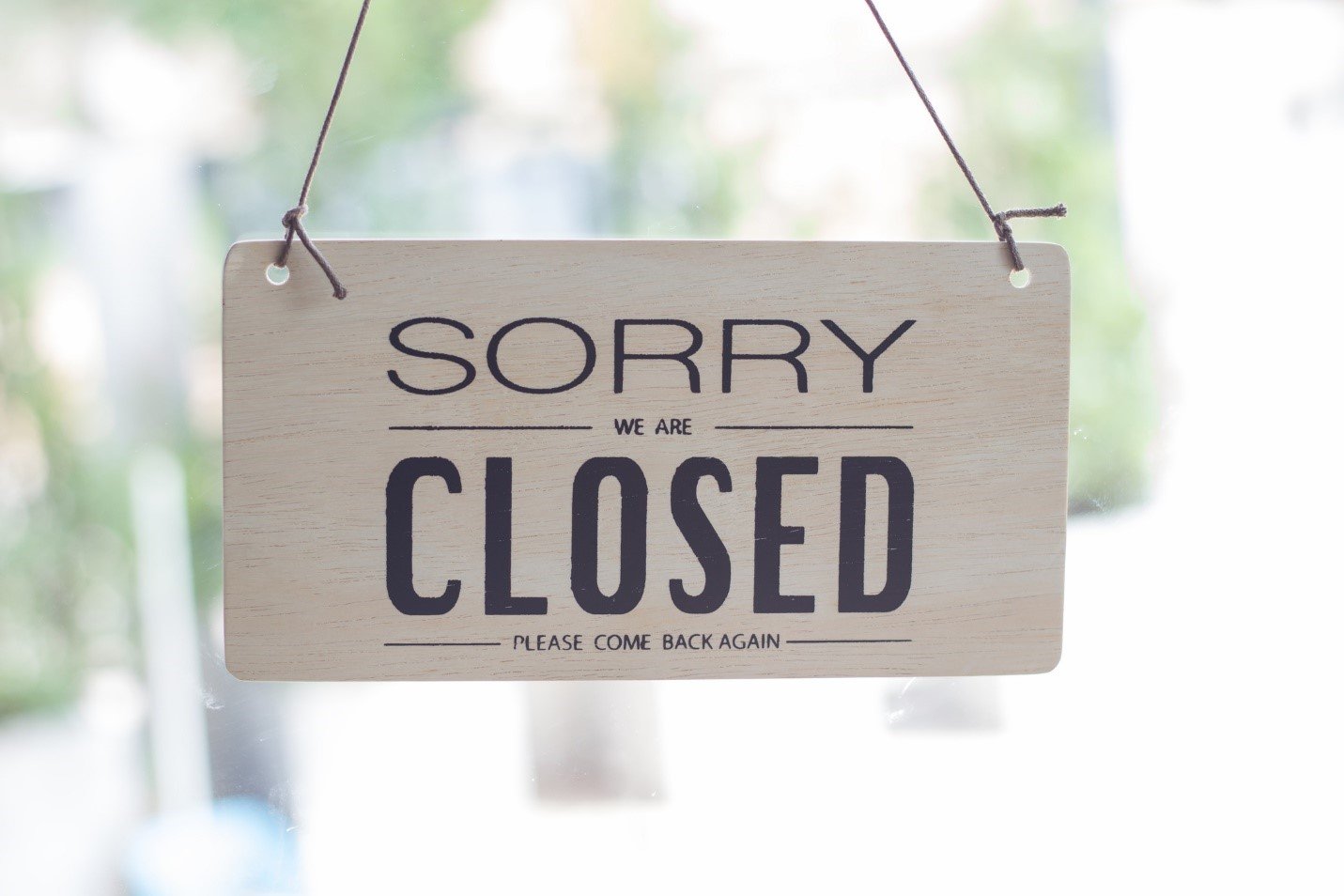
One major advantage that online stores have over brick-and-mortar shops is that they’re always open for business. Anyone can access your site at any time, which is great if you’re trying to attract customers in other time zones. Moreover, the order placement process hums along smoothly without a serious need for constant human supervision. As the old marketing cliché goes, eCommerce business owners can make money in their sleep.
Unfortunately, nothing is perfect. Online stores never close … except when they stop working. Website downtime is a genuine phenomenon that is not just possible, but inevitable. Every eCommerce business owner should be prepared to deal with it. The best way to prepare is to learn more about it, and we can help with that. This in-depth guide offers a crash course on website downtime: what it is, why it happens, and how you can prevent it.
What is Website Downtime?
We can define the term “website downtime” by the presence of one of two technical issues. The first is inaccessibility. If no one can get on the domain through any page or any conventional means, the site is experiencing downtime. The second issue is a total lack of function. If people can enter the site but nothing is working as it should be, the site is experiencing downtime.
“Lack of function” can mean different things for different sites. Whatever features the site may have, they just do not work during these events. For example, you could diagnose an online video player as experiencing downtime if none of the videos will play. More pertinently for our readers, would-be customers can’t search for products, add them to shopping carts, or place orders when online stores go offline.
Before we move on, we should also state what doesn’t count as an example of website downtime:
- Permanently defunct or closed sites are inaccessible, but for a completely different reason. “Downtime” is a temporary state, experienced by websites that should be functioning normally.
- Websites that are “down for maintenance” are also temporarily inaccessible. However, website runners do this on purpose to make updates and alterations.
- 404 pages are the result of a successful connection with the website’s server. They don’t affect the entire website’s operations.
- Lastly, certain features on certain sites may not work simply because of poor coding and programming. You can’t say they’re experiencing downtime because they were broken from the start.
Why Do Websites Go Down?
Website downtime can be a frustrating or even frightening phenomenon for the site’s owner. Identifying the cause can lead to a solution. At the very least, it can provide some closure. In the case of website downtime, learning the full extent of a negative situation rarely feels as bad as the uncertainty that precedes it. We will describe a few of the more common causes below.
DDoS Attack

A sudden and significant surge in the volume of visitors who seem to come from all over the world? This phenomenon sounds like a dream come true for any online business, especially a small one. Unfortunately, it may be too good to be true. This activity accurately describes your textbook distributed denial-of-service (DDoS) attack.
Hackers pull off these attacks to overwhelm servers, shut them down, and steal some data. If those servers host multiple websites, they will all experience downtime. Your own site may be affected, even if it wasn’t the target. When you sign up with a server, make sure to inquire about their security measures. Feel free to implement a few of your own as well.
Too Much Traffic
Sometimes, websites receive extraordinary traffic spikes that are entirely legitimate. Maybe your products became a hot commodity overnight, or maybe you somehow went viral. If your server isn’t prepared to handle so many requests at once, though, your celebration may be cut short. Your site might crash from the strain.
Arguably worse, the server may even shut you down to stop other sites from experiencing downtime. As with DDoS attacks, your website may undergo downtime because another website on the same server experienced that spike instead. This is the downside to aligning with a shared server, and something worth considering as you decide where to set up shop.
Equipment Issues
We often forget that the internet does not simply exist in some separate dimension. We can only create and access websites because they are stored in massive and complex pieces of equipment at data centers. Not even these modern marvels are immune to power outages and other issues.
If the server shuts down on you, it may not be the host’s fault, but a failure of technology. As you can imagine, there is little that you can do about this. You can, however, choose a server that implements hardware redundancies. If one machine needs repairs or replacement, another can take its place in the meantime and keep your site humming.
Simple Mistakes
“The devil is in the details” is one of our favorite clichés here on the Shift4Shop blog because it’s so true for any coding-related work. Just one typo, one missing character, one barely noticeable mistake can wreak extremely noticeable havoc. We mention this because human error can be the cause of website downtime just as much as hackers’ malice, technological limitations, or machine breakdowns.
Why is Managing Downtime So Important?
Internet users are often impatient. Just consider your own experiences when surfing the net. When a website takes longer than three seconds to load, how often do you wait for it to finish? Page speed studies show that 40% of prospective visitors bail past that point, and the percentage ramps up with each additional second. This is why it’s important to invest time in making sure that your website loads fast and it works well.
And that’s just what happens when the website is working as it should be. The true cost of downtime for eCommerce businesses can be staggering. There’s the financial hit, of course. Every minute of downtime is a minute during which customers might have placed an order. If anyone was still browsing when the site went down, they might shop elsewhere. If they were in the middle of the checkout process, they may leave the cart abandoned even when the issue is resolved.
The “total inability to access pages” type of downtime is troubling enough. The “none of the features are functioning” type is even worse. Imagine the first-time visitors you worked so hard to attract arriving at the exact wrong time. They can’t click the links, play the videos, add products to their cart, or even use the search bar. First impressions matter so much in eCommerce, and what else will most of these would-be customers conclude besides that your website is completely broken?
People can forgive sites that are just completely down, but they may not forgive sites where nothing’s working. Although 100% uptime is as impossible as any kind of perfection in our imperfect world, you must strive to minimize downtime as much as possible.
How to Check Your Website’s Status

There’s another potential complication to the downtime conundrum. Imagine receiving a call from a confused relative saying that the internet is broken. They report that their neighbor’s Wi-Fi isn’t working either, so it’s not just their house. When you check your own connection, you find that it’s working just fine for you.
This story illustrates that website downtime may only affect specific areas rather than the entire world wide web. Checking whether you can access your online store on your own computer will therefore provide little support to customers in other parts. Here are some tools for more comprehensively checking the status of your website.
Uptrends
Uptrends is often the first example in lists of uptime monitoring tools, and for good reason. Anyone can visit the front page, type in their desired domain, and see results from over 40 different “checkpoints.” They span the globe from Boston to Brussels to Beijing to Buenos Aires. That’s just the Free Website Uptime version — paid subscribers can expand their reach fivefold.
The true reason that Uptrends usually shows up ahead of everything else is their remarkable balance between free and members-only tools. Their free website monitoring grants you email alerts and plenty of excellent data. Their website performance monitoring, which gives you even more data and helpful recommendations, is behind the paywall. We’d recommend at least trying the 30-day free trial.
StatusCake
How often should you check the status of your site? Doing it as often as possible wouldn’t hurt, but eCommerce store owners already have much on their plate. StatusCake takes it off your hands by conducting tests every five minutes. With their instant alerts, you can become aware of any issues almost immediately after they occur.
StatusCake can only check your website’s status from 28 countries, much less than Uptrends. However, they can do so much for their customers. On top of checking for downtime, they send alerts for usage thresholds and reminders for renewing SSL certificates. These and other excellent services are why giant companies and organizations like Google, Disney, NASA, and Microsoft trust StatusCake.
UptimeRobot
Another company that NASA trusts is UptimeRobot. If you have only one domain to your name, their services may not be the superior option compared to others on this list. If you run multiple websites like NASA does, that’s a different story. They can monitor as many as 50 websites on your behalf, and they can do it every five minutes … for free.
Another strength is in their alerts system. Most others will only send you an email or text. UptimeRobot has 13 options beyond those, including Twitter, Discord, Slack, and a simple phone call. A mobile app is also available for entrepreneurs on the go. These are just a few of the great features that the platform’s users can try out.
How to Prevent Website Downtime
Website downtime is largely out of eCommerce store owners’ hands. Outside forces are responsible for most of the issues that cause downtime. More important to understand is that a little downtime is unavoidable. You can only hope that it’s spread out over a few minutes at a time, not concentrated into a minutes-long nightmare.
One thing that you can control is the hosting for your website. The goal is to find one that offers excellent server security, which makes it harder for hackers to launch successful DDoS attacks. Another perk to look for is service credit. Under this policy, the hosting company offers refunds to site owners if monthly uptime falls short of their guarantee.
On that note, the uptime guarantee is the most notable detail to check out — and often one that’s more than meets the eye. 99% uptime may sound promising, but it still amounts to over seven long hours of downtime each month. 99.9% brings it down to about 43 minutes, a massive improvement. eCommerce hosting with 99.94% uptime is even better — 26 minutes.
Conclusion
As we said, nothing is perfect. Even so, perfection is still something that one can and should work toward. Getting close and falling short of an unreachable ideal is still better than never striving at all. This applies as much to minimizing website downtime as it does to anything in eCommerce — and, indeed, in life. We wish you the best of luck in minimizing your own site’s downtime and maximizing uptime.





Leave a reply or comment below